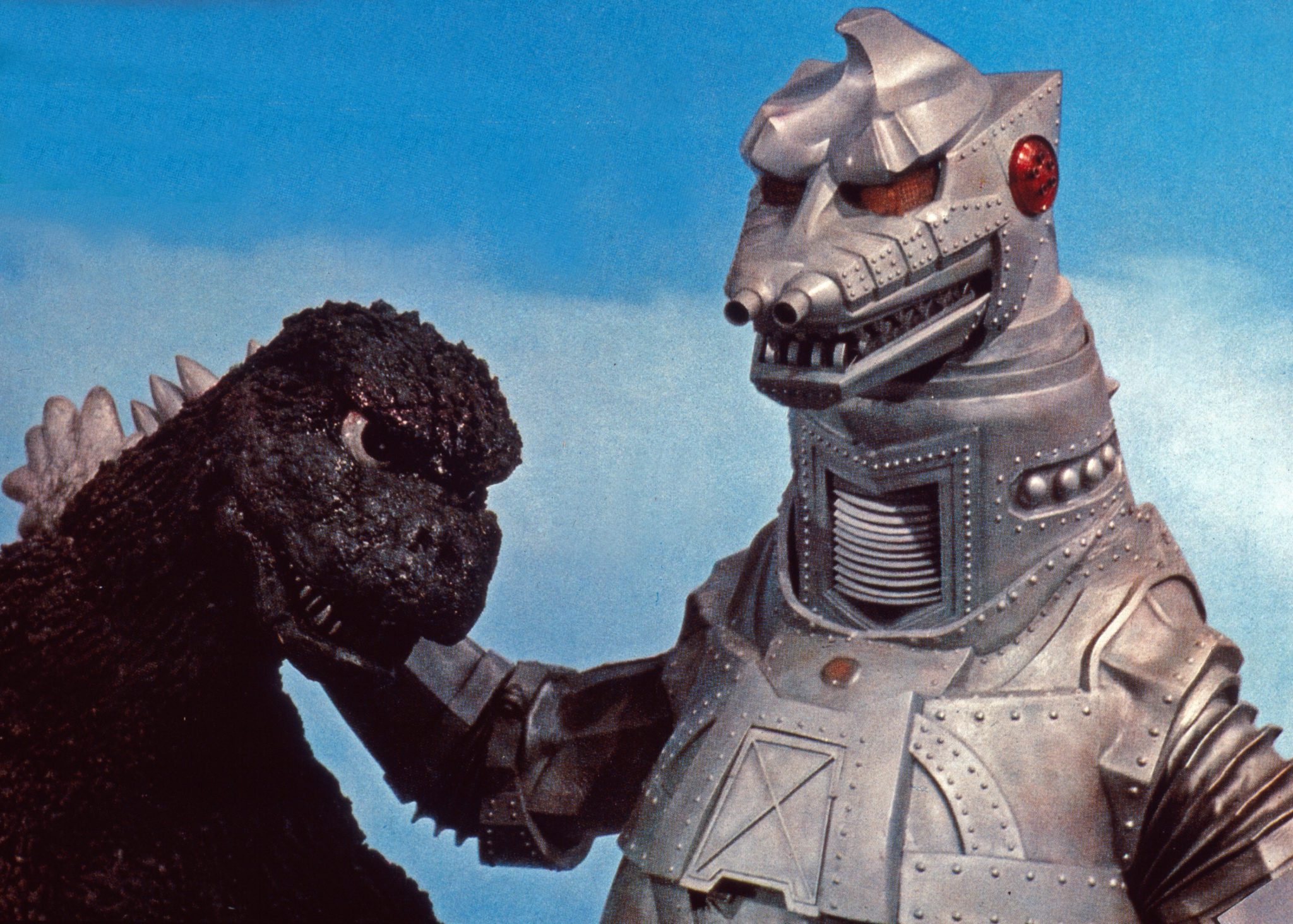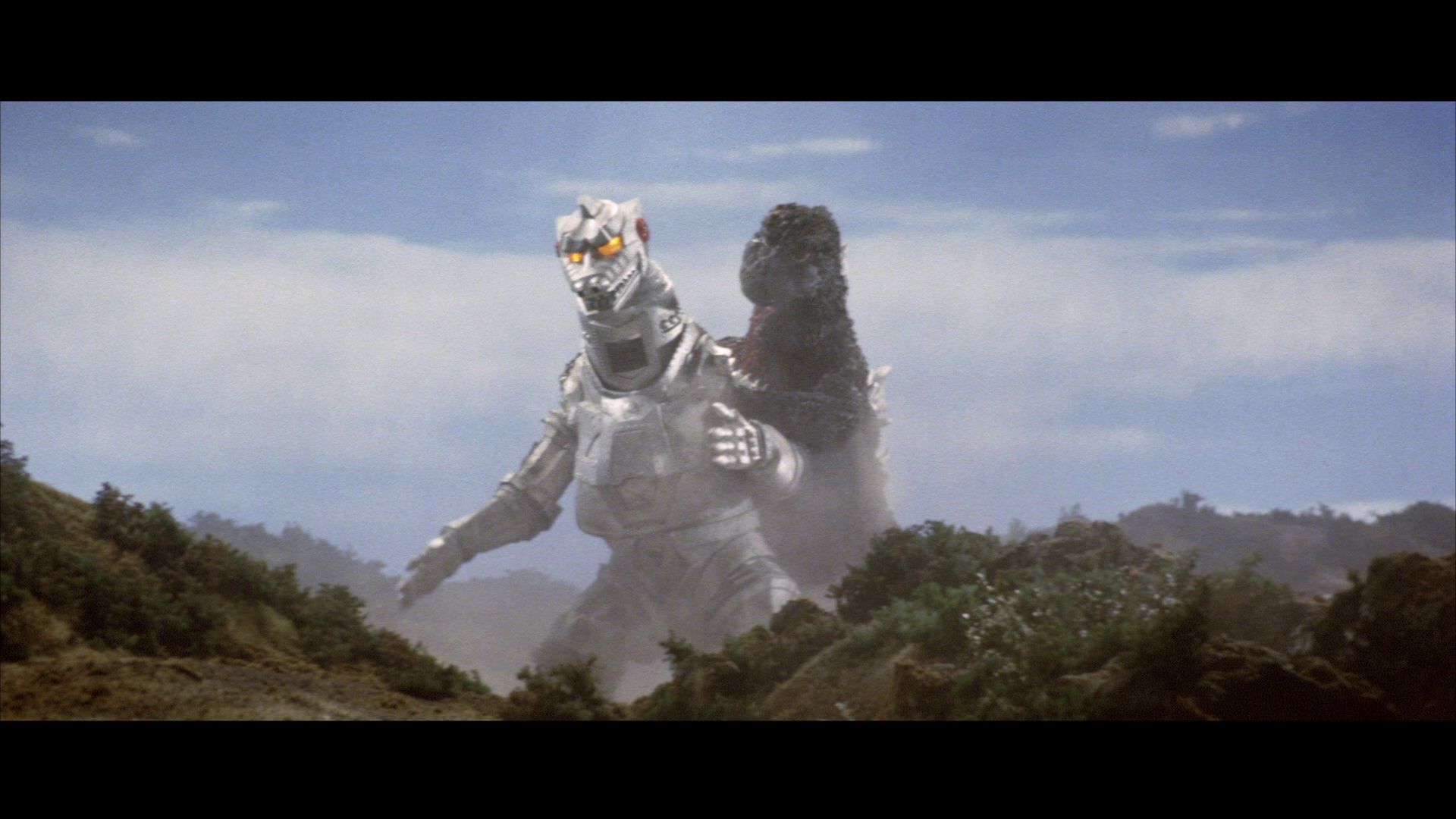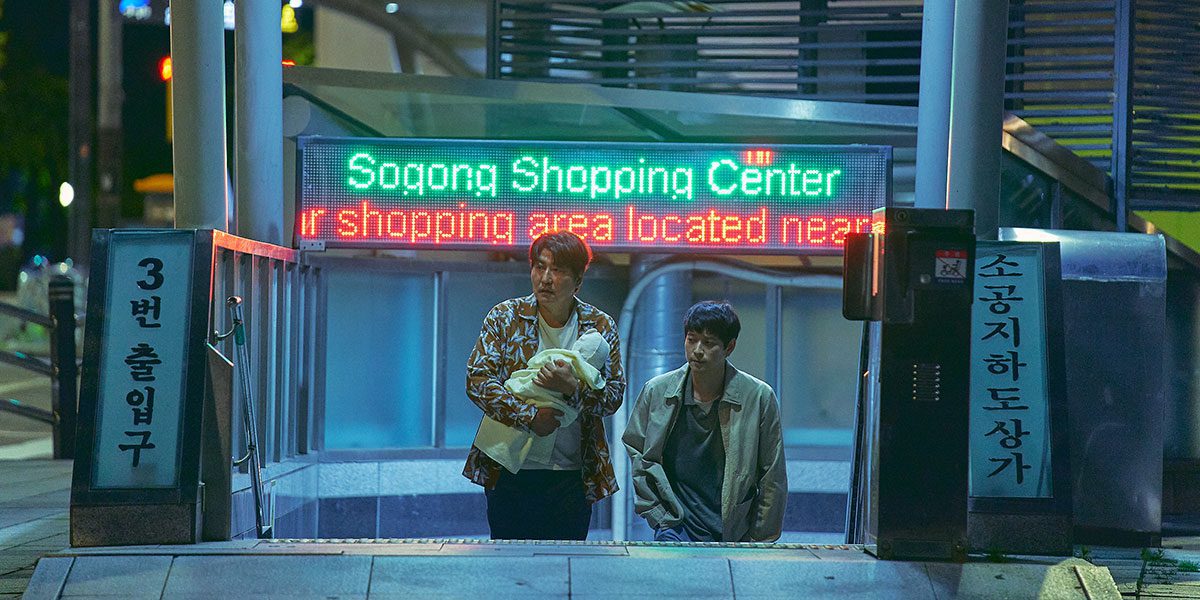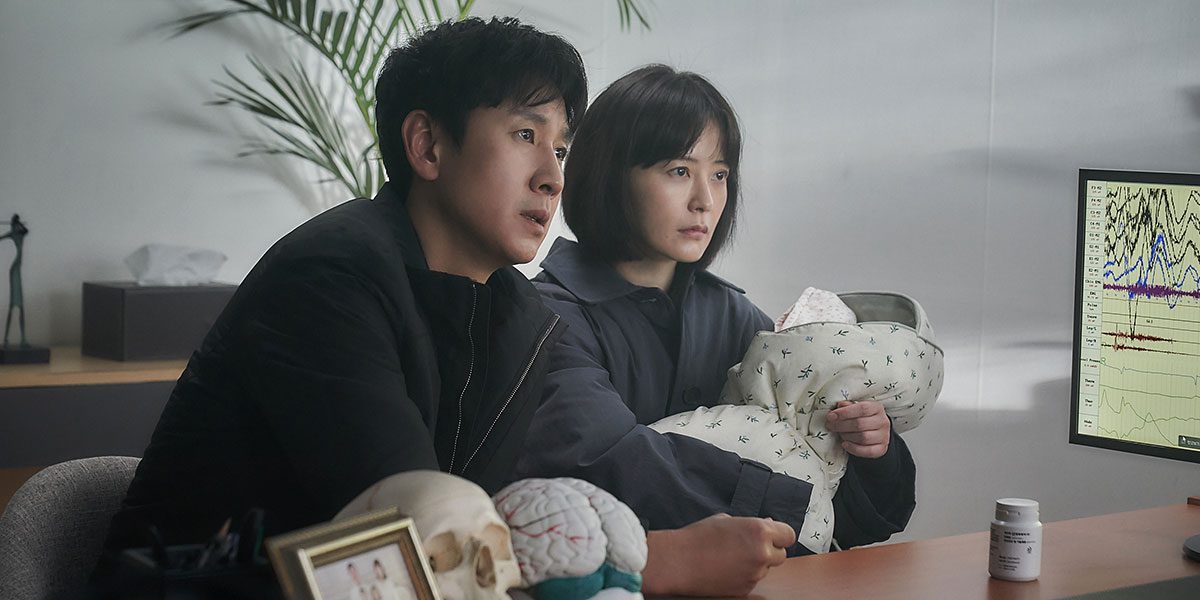
Nami Kunigami (Barbara Lynn), an Azumi priestess in Okinawa, has a vision that a giant monster will come and bring destruction.??Shortly after that, Masahiko Shimizu (Kazuya Aoyama) finds some mysterious metal while exploring a cave.
Archaeologist Saeko Kanagusuku (Reiko Tajima) meets Keisuke Shimizu (Masaaki Daimon), Masahiko?s brother, at another cave where ancient artifacts have been discovered. There is a statue of the Azumis? monster protector King Caesar and a prophesy warning that a monster will soon come to destroy the world, but two other monsters will rise up against it.
Professor Hideto Miyajima (Akihiko Hirata) identifies the metal found by Masahiko as space titanium. Saeko is attacked by an intruder who wants the statue, but the intruder is driven away by Keisuke.
Godzilla appears at Mount Fuji and begins a rampage across Japan, but Anguirus arrives and attacks him, something that is unusual since Godzilla and Anguirus are friends. Godzilla defeats Anguirus, sending the spiky monster fleeing for his life.
As Godzilla is attacking an industrial area, a second Godzilla arrives. The second Godzilla blasts the first with his atomic ray, and the first Godzilla is revealed to be Mechagodzilla wearing a disguise. Godzilla?s and Mechagodzilla?s energy rays collide, causing an explosion that knocks an injured Godzilla into the sea and damages Mechagodzilla.
It is soon discovered that Mechagodzilla is controlled by alien invaders from the Third Planet of the Black Hole. Professor Miyajima, his daughter Ikuko (Hiromi Matsushita), and Masahiko are captured by the aliens and Professor Miyajima is forced to repair Mechagodzilla. Keisuke and Saeko transport the statue back to Okinawa by ship so they can awaken King Caesar to fight Mechagodzilla, but are attacked again by an alien trying to steal the statue. The alien?s attack is unsuccessful and he is fatally shot by INTERPOL agent Nanbara (Shin Kishida).

Eventually, the aliens launch Mechagodzilla again but the statue is used to awaken King Caesar.??King Caesar confronts Mechagodzilla and fights bravely, but isn?t strong enough to overcome the robot.??Just as it seems all is lost, Godzilla appears and joins forces with King Caesar against Mechagodzilla.
Godzilla vs. Mechagodzilla is an improvement over the previous two Godzilla films. Stock footage seems to be limited to a few still images in Nami?s vision and a brief car explosion. The plot is very fast paced, with the King Caesar statue acting as MacGuffin and much of the film?s action is built on attempts to keep or steal it. The Third Planet of the Black Hole aliens are ape-like and disguise themselves as humans. When killed, their disguise melts away revealing their true form underneath. The film almost feels like a fusion of James Bond and Planet of the Apes with Godzilla, and it is a fun mix that keeps the viewer engaged in both the monster and human action.
Despite this, Godzilla vs. Mechagodzilla still shows the impact of a tight budget in its special effects sequences. Nami?s vision consists of images involving Ghidorah rather than Mechagodzilla and is composed of stills taken from other movies. Also, a rather silly and cheap looking second Godzilla costume is used for some scenes, usually the disguised Mechagodzilla.
Godzilla vs. Mechagodzilla doesn?t really have much to say, but it does touch on some major cultural and historic issues regarding its Okinawa setting. The Ryukyu Islands used to be under the control of the Ryukyu Kingdom and were their own nation. At that time, the people of the Ryukyu Islands had their own distinct culture and languages. The Satsuma Domain in Japan brought the Ryukyuan kings under their control in 1609 and the Ryukyu Islands were eventually annexed by Japan in 1879, turned into Okinawa Prefecture, and the Ryukuan people were assimilated into Japanese culture and language.

When Mechagodzilla first appears in Japan disguised as Godzilla, Nami?s grandfather Tengan Kunigami (Masao Imafuku) prays that he will destroy the people of Japan for trying to conquer the Azumi people. This brief moment in the film hints at the history of Okinawa and how it went from independent nation to becoming part of Japan.
Also tying into the Okinawan setting of the film is King Caesar, who is based on the Shisa, stone statues that are common in Okinawa. Unlike Mechagodzilla, who is loaded with weapons, King Caesar is only able to reflect energy beams back at his attacker with his eyes. This has the effect of making King Caesar feel greatly outmatched by Mechagodzilla, which makes sense given the prophecy early in the film that two monsters will be needed to stop Mechagodzilla. This is somewhat undermined, however, in that Godzilla is pretty much able to finish off Mechagodzilla on his own.
Godzilla vs. Mechagodzilla was released in Japanese theatres on March 21, 1974. Toho had the film dubbed into English in Hong Kong and Cinema Shares released Godzilla vs. Mechagodzilla theatrically in North America in 1977. They initially released the film as Godzilla vs. the Bionic Monster, but a threat of legal action from Universal Television over the title, due to their own The Bionic Woman television program, caused Cinema Shares to change the name of the film to Godzilla vs. the Cosmic Monster. A few edits were made to the film for its North American release to remove some of the violence and swearing.
Toho?s uncut and dubbed international version of Godzilla vs Mechagodzilla with onscreen titles changed to English became the standard version released in North America during the VHS era. In 2004, Columbia TriStar Home Entertainment released Toho?s international version of Godzilla vs Mechagodzilla on DVD, and viewers could choose to watch it with the original Japanese audio or Toho?s English dub. This release is now out of print. The original Japanese version of Godzilla vs. Mechagodzilla, with Toho?s English dub as an alternate audio option, is currently available as part of The Criterion Collection?s Godzilla: The Showa-Era Films, 1954-1975 Blu-ray set.




